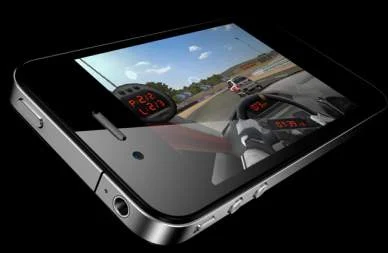Back in March, Apple confirmed that its iOS app store had hit the 25 billion downloads mark – prompting me to wonder what the most popular programs were for both the iPhone and iPad.
I was also curious to see if Android app downloads would follow the same trends as iOS installations. It turns out that while there are some similarities, Android users tend to be a bit more serious about what they want to do with their devices.

Now I had assumed that people bought iPads and iPhones so they could do work on the go, create their own artwork, music, or videos, keep track of their appointments, do remote collaboration with overseas engineers, and all those other things they show people doing in the commercials.
Well, not exactly.
Along with the 25 billion announcement, Apple also published lists of the top 25 downloaded apps for both the iPhone and iPad and the number one app for these devices was…wait for it…Angry Birds! That’s right folks. Angry Birds made both top 25 lists three times on both lists! That’s six times out of 50. 12% of the all time, most popular iOS apps are Angry Birds!!!
Other apps that made the lists were Words with Friends, Paper Toss, Bump, PacMan, Temple Run, Touch Hockey, Unblock Me and Fruit Ninja on the iPhone and Words with Friends, Fruit Ninja, and Solitaire on the iPad. So 17 out of the most popular 50 iOS apps are games.
What else are these people doing with their devices? Facebook and Twitter show up six times on the two lists. The iPhone top 25 list also includes Pandora Radio, Netflix, Shazam, Movies by Flixter, and Groupon, while the iPad list includes Netflix and Pandora Radio as well as ESPN Sports and the ABC television apps. Both lists feature Google Earth too.
iPad users apparently like the Kindle viewer for reading books (in place of Apple’s iBook reader) and based on the fact that iPhone users like the Flashlight app we can assume they want to get around in the dark.
So 35 of 50 apps don’t really have anything to do with productivity. Then again, iPad users do like keeping up with the news, as CNN, NY Times, Flipboard, and USA Today apps made their list. And apparently they buy things on eBay. Again, I’m not sure if my boss would consider reading the newspaper or buying stuff on eBay terribly productive so that brings the total up to 40 out of 50 apps.

Yes, there are some more meaningful apps that made the top 25 lists. For example, both iPhone and iPad owners wanted Skype (in place of Apple’s FaceTime) and the Weather Channel (in place of Apple’s weather app).
iPhone users also downloaded Google Maps (in place of Apple’s version) and Google Search. So people want to call their friends, surf the Web, find out what the weather will be like, and they want to get from point A to point B. Fair enough. I suppose those things are productive.
Finally, iPad users apparently needed two different calculators (there’s one already built into the iPhone) and they need a dictionary. Oh yes, there is Instagram, a photo manipulation and sharing app for the iPhone. Definitely productive things in my book.
So people spend about $200+ for an iPhone and anywhere from $499 to $829 for an iPad, and they use them to play games, check Facebook, read the newspaper, watch movies, and listen to music. These things aren’t productivity devices, they are expensive toys for grownups. Nothing wrong with that I suppose, but that’s not exactly the image being promoted.

Curiously, Android user downloads paint a slightly different picture. Of the top 25 paid and free Android apps four are games (and yes Angry Birds is one of them) and while its not really a game I would have to put the Beautiful Widgets app in the frivolous category.
Then, as expected, you have Facebook, Google Street View and Google’s e-book reader, plus a YouTube app and SoundHound (a version of Shazam).
So 10 of the 25 aren’t terribly productive.
But then we have Google Search and Maps, Gmail, Swiftkey (a keypad app) and a PDF reader/annotator app in the top 25. And you have Camera ZOOM FX and Instagram both camera and picture apps. Then we get apps for security, backup, utilities, and tools. Finally, and perhaps most curiously, coming in at number 10 on the top free Android apps list is the Bible.
If we expand the Android list out to 50 we end up with a few more games, Skype, music, and radio. But we also add more utilities, paint programs, voice search, and translation apps.
Apparently Android users actually want to do more than just play games on their devices. I don’t know why this is, or if it means anything at all. I just found it to be rather curious.






